Pineapple, Ancient and Modern in Cuzco

A native of South America, the pineapple has changed the world at the same time it remains strong in Cuzco. It is hard to imagine the Imperial city without pineapple juice for breakfast or its taste along with purple corn in the iconic chicha morada drink that accompanies most meals. Pineapple, sliced on a plate, is common in this city where the Incas once trod.
When the Spanish came to the new world, they found pineapple growing from (Hispaniola the island that today houses Haiti and the Dominican Republic) to Peru. There is evidence that the ancient societies of the Peruvian coast grew pineapple as there is that the Incas also enjoyed the plant.
When you see the carts or stands filled with pineapples in the markets and streets of Cuzco you are truly seeing something that is ancient in this land.
The pineapple comes from the bromeliad family and is called scientifically ananas comosus. The word anana, commonly used in Portuguese for this delicious fruit, comes from the Tupi language that was the common language of colonial Brazil and is part of one of the most widespread language families of lowland South America, the Tupi Guarani. In Spanish and English it took its name because of a resemblance the conquistadors saw between it and a pine cone.
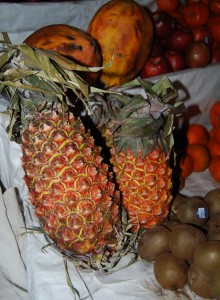
The pineapple is unlike most of the 1400 kinds of bromeliads that are epiphytic, that is they get their nourishment from rain and air and grow on other plants. Instead it grows in the ground.

It has a rosette of pointed leaves that can be 90 cm. long. In the middle of the rosette grows a stem on whose end a flower blooms. From the flower comes the fruit, a pineapple, but it is not a single, but a multiple fruit.
Once the pineapple left the New World to be cultivated abroad it led to transformations in other parts of the world. Huge areas were sculpted out for fields and laborers were recruited, sometimes from half a world away. But in the Cuzco area its production has not been commercialized to that extent.
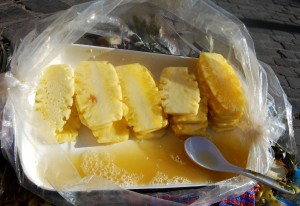
People in Cuzco do not just eat the fruit of the pineapple, tasty though it is. They also use the peel. For example pineapple peel is key to making delicious drinks such as a pineapple punch served commonly in restaurants throughout the city of Cuzco as part of a fixed lunch (menu). It is also used to make the purple corn drink, chicha morada. Together the corn and pineapple make a perfect combination when boiled together.
Though it may surprise, the pineapple also has medicinal value. Since its principle component is water, around 85% of the total by weight, it is useful for people who wish to use weight. It satisfies but has few calories.
Pineapple is produced year round throughout the world.
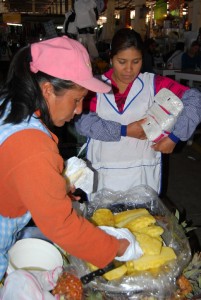
In Cuzco, though there are many indigenous varieties of pineapple, two varieties are the main ones produced, the royal pineapple and the golden pineapple. Though increasingly grown in tropical areas of the region, the Pillcopata valley in Urubamba province is the main producer of pineapple in Cusco.
Like elsewhere in Peru, pineapple production in Cuzco has mainly been for domestic consumption. Indeed, Cuzco’s pineapples comprise some 3% of national production. Increasingly Peruvians are looking to claim a share of the world’s export market in pineapple.
In Cuzco the pineapple is eaten almost daily. It appears in the following ways: canned or bottled pineapple in slices, small chunks, and so on in syrup; dried pineapple; pineapple juice; jam; baked goods, and even as vinegar.
Pineapple is found in most Cuzco markets where you can see cascades of the fruit waiting for purchase. But you will also see people with carts and wagons selling them in the street. You can always buy a plate of sliced pineapple on the street.
You will also see the fruit among the mounds of product by the side of the juice vendor. Pineapple is an important ingredient of the fresh made juices they poffer daily to the people of Cuzco.
Pineapple is an ancient part of this city, but it continues to be important and while you enjoy good pineapple in your visit to Cuzco, you are also tasting something that goes to Cuzco’s days of Inca glory.
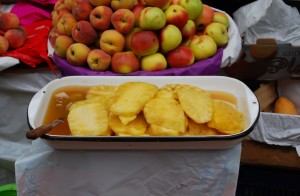
References:
AMPEX, Perfil del mercado de la piña. www.ampex.com.pe
Berrin, Katherine & Larco Museum. The Spirit of Ancient Peru:Treasures from the Museo Arqueológico Rafael Larco Herrera. New York: Thames and Hudson, 1997




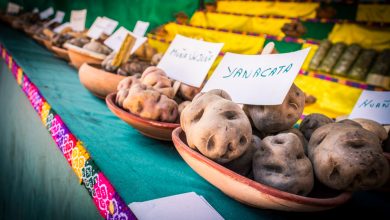
hi guys my teacher has told me so much about you and ur awesomeness